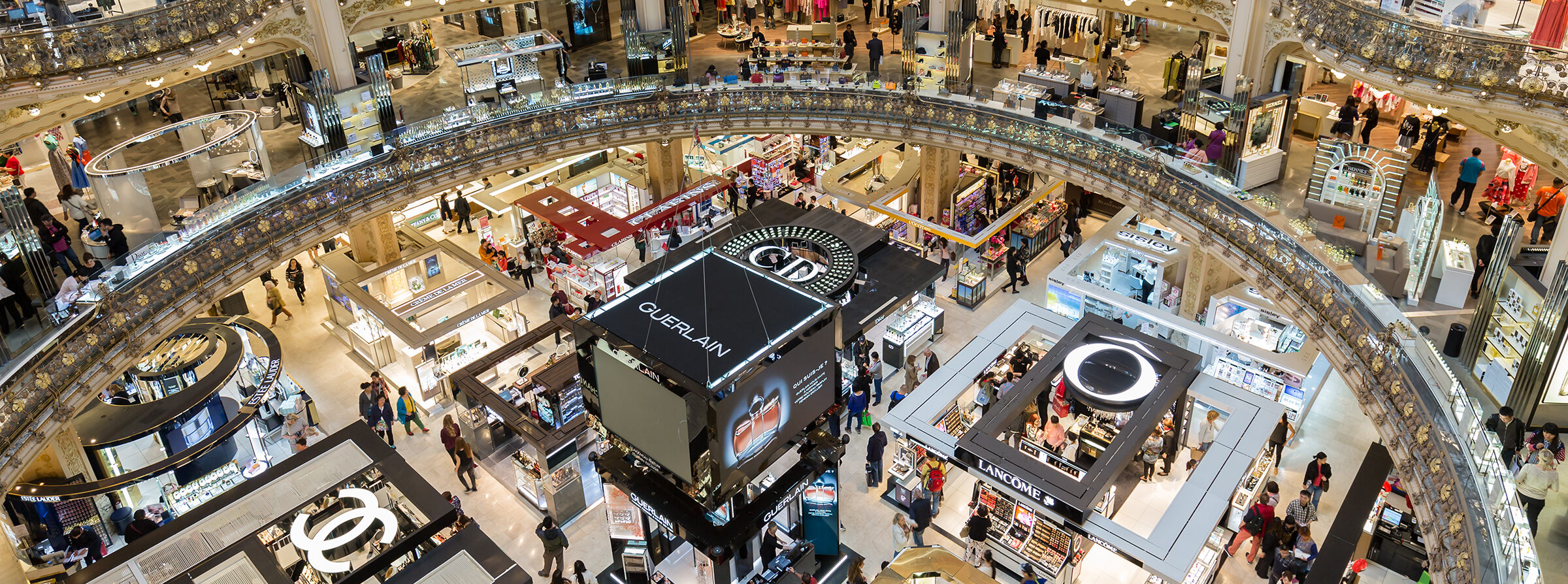Shopping is one of my favorite activities. Buying things makes me happy, and can be a quick cure to whatever “blues” I may have at the time. Of course when I travel, one of my favorite things is window-shopping. (I usually buy a few things in the window as well!) Whether you’re a connoisseur of high fashion, or you simply want to shop for duty-free items or souvenirs, let me be your guide. I’ll tell you some fun facts about shopping worldwide, and most importantly, I’ll give you the scoop on the must-see and must-shop streets and districts in London, Paris, Milan, and dozens of additional fantastic vacation destinations.

London has been a fashion capital since the 16th century. It was one of the world’s epicenters for production of silk and wool, and “English style” became internationally known with the daring looks modeled by such kings and queens as Henry VIII and Elizabeth I. By the 18th century, tailors and dressmakers brought the style of the aristocracy to the commoner classes. In the Victorian era, the West End became well-known for its shops of luxury ready-to-wear clothing and designer goods, in addition to shops selling made-to-measure clothing. This included such areas as Regent Street, Bond Street, and Savile Row in Mayfair; King’s Road and Knightsbridge in Kensington and Chelsea; and Oxford Street (pictured), Carnaby Street, and Covent Garden in Westminster. Nearly all of these streets, which gained their fame in the 19th and early 20th centuries, are still popular shopping streets today. Virtually every single one of world’s top luxury brands and popular international consumer goods giants are represented on London’s famed shopping avenues.
The very first fashion capital was Paris. By the 17th century, when London was just beginning to find inspiration to make their own English sense of style, Paris was already exporting their fashions all over the world. Like in England, French fashion started with the grand vestments of the royal court, particularly Louis XIV. By 1670, there were already newspapers and other periodicals devoted to fashion, in essence creating fashion-centric media. These periodicals were the first to correlate different fashions and styles with “seasons”, the forerunner to high fashion’s winter and summer collections. By the 19th century, the concept of couture was born, and couture garments found themselves next to ready-to-wear in Paris’s booming department stores, themselves a new concept. Streets such as the Champs-Élysées (pictured), Rue de Rivoli, Boulevard Haussmann, Avenue Montaigne, and Rue Faubourg Saint-Honoré became bywords for French fashion and couture. Nobody revolutionized French fashion quite like Coco Chanel, and her original shop on Rue Cambon has been a Paris mainstay since 1910.


Milan is also one of the oldest fashion capitals in the world. Did you know we get the word “milliner”, meaning someone who sells hats, from the original term “milaner”, which meant someone who sells any sort of luxury jewelry or clothing? By the 19th century, Milan’s fashion industry exploded, with clothing making the transition from just being sold in boutiques to grand shopping centers such as the Galleria Vittorio Emanuele II. Fashion magazines chronicled all the new styles and what would be trending in the future. Milan has been well-known for its top-quality fabrics and silks for centuries, which ended up eventually supplying the burgeoning ready-to-wear industry that rose in the 1970s. Today you can shop at Milan’s boutiques (pictured) and department stores at a number of places throughout the city, such as the Piazza del Duomo and the Quadrilatero della Moda (in particular the Via Monte Napoleone, among other notable streets).
Milan might be the more notable fashion capital in Italy, but Rome is no slouch either, giving the world such noteworthy luxury brands as Bulgari, Valentino, and Fendi. The Via dei Condotti (pictured), which begins at the base of the Spanish Steps, is the epicenter of luxury shopping in Rome, and has been for generations. Nearby streets such as Via Borgognona and Via Frattina are also renowned for their luxury boutiques and larger clothing and accessories stores, with the former home to a Dolce & Gabbana flagship store. Other streets combine both larger fashion houses and smaller clothing, dress, and hat shops. You can find this eclectic mix along Via Cola di Rienzo, Via Ottaviano, Viale Giulio Cesare, and Via Candia. The greatest thing about shopping in Rome is that a café is never far away…bring on the retail therapy and the espresso!
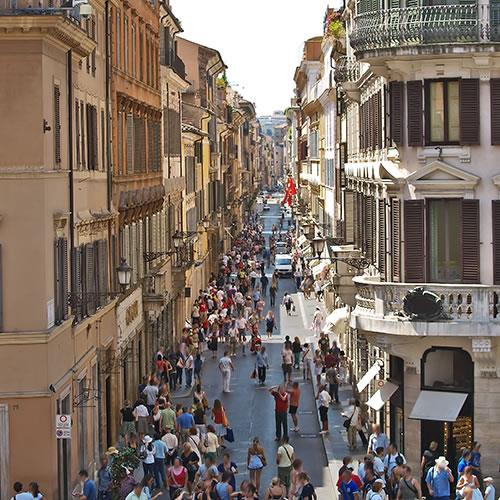

New York City is the USA’s largest city and it’s also its fashion capital. It makes sense that the city that never sleeps also never sleeps on the latest fashions. It was said that whatever was en vogue at the time in New York would end up spreading across the country, given enough time, and that has held true for over a century. Manhattan became synonymous with American fashion beginning in the early 20th century, as immigrants from Europe and Asia worked tirelessly to supply the city and the country with the clothes and accessories they needed to look their best. The Garment District, stretching from 5th Avenue (aerial view pictured) west to 9th Avenue in Midtown Manhattan, has been the epicenter of clothing and accessories retail in the city for over 100 years. Herald Square, where 6th Avenue meets 34th Street, is the home of the flagship Macy’s department store. Boutiques and luxury retailers line 34th Street to the west and east of Herald Square.
Tokyo emerged as a budding fashion capital during the Shogunate era (1603-1868), when there was more of a demand for elegant and intricate kimonos. As Japan became a country where all classes of people began to amass more wealth, high fashion spread out across the country, no longer confined to Tokyo or to Kyoto. Western influences began to shape Japanese fashion beginning in the Meiji period (1868-1912). Japanese high fashion really began to pick up during the Showa and Heisei periods (1926-2019), when Japanese designers began to take more cues from Japanese popular culture to inspire them. For haute couture, visit Ginza, the first Western-style shopping street in Tokyo (and also the largest). The area around Shinjuku Station is well-known for its boutiques, and youth fashion can be found in Shibuya, Aoyama, and Harajuku (boutique window pictured).










Shopping for clothing can be fun, but let’s not forget that these fashion capitals are also retail capitals, and they offer everything from accessories like shoes, bags, and hats to electronics and even souvenir shops. We’ve already discussed where the most important shopping districts are in London, but what can you see there? Let’s go in-depth, shall we?
Oxford Street is renowned for Selfridges, the legendary department store started by an enterprising American. John Lewis and House of Fraser offer all the big labels in one place. Primark and LUSH also have their flagship stores on this street. On Regent Street, Liberty London is a great place to get gifts your friends back home will love. Knightsbridge is the home of the iconic department stores Harrods (pictured) and Harvey Nichols, while Sloane Street is the place to go for more designer goods. The best place for souvenirs, hands-down, is Camden Lock Market, open from 10 a.m. to 6 p.m. daily.
In Paris, the Champs-Élysées, in the middle of the Golden Triangle, is the place for the trendiest and most luxurious boutiques, such as Hermès, Dior, Louis Vuitton, and the aforementioned Chanel. Other noteworthy stores on the Champs-Élysées include perfumer Guerlain and the Galeries Lafayette concept store. The flagship Galeries Lafayette store (pictured), one of the oldest department stores in Europe, is located on Boulevard Haussmann, and you can find gifts in all price ranges here. Also on Boulevard Haussmann you will find Printemps department store and the Galerie Vivienne, where they have everything from souvenir shops to a Jean-Paul Gaultier boutique. Le Marais is home to so many eclectic shops and stores, including Merci, a three-story boutique that sells everything for you and your home, from clothes to books to home decor. Foreign designers such as Harry Winston and Bulgari are clustered along Avenue Montaigne.
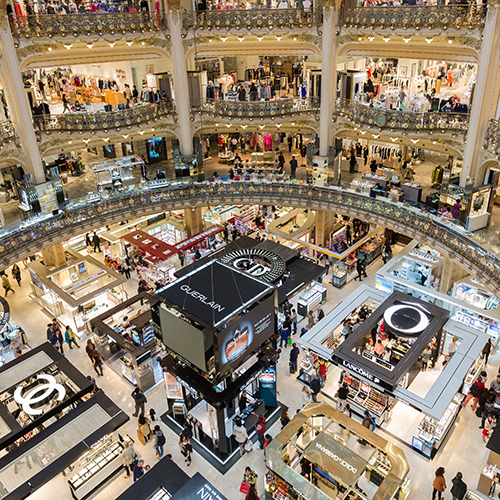
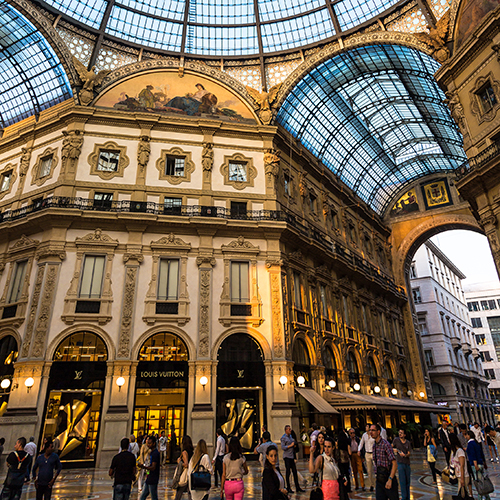
The city center in Milan is where the best shopping is. Let’s start with the Galleria Vittorio Emanuele II (pictured), one of the oldest shopping malls in the world. It is well-known for a variety of shops and stores at various price levels, but it is perhaps best-known for its designers like Versace and the very first Prada store. Via Monte Napoleone in the Quadrilatero della Moda is known for its Chanel and Fendi stores, and is definitely a prime place for the well-heeled to shop. The “Golden Rectangle” around the Piazza del Duomo is Armani central, and you will find stores on all sides of the Piazza. The La Rinascente department store carries all of these brands’ ready-to-wear and couture collections, as well as all other types of merchandise in various price points. The floor called the “Design Supermarket“ has great Italian-made mementos that are perfect as souvenirs for friends and family.


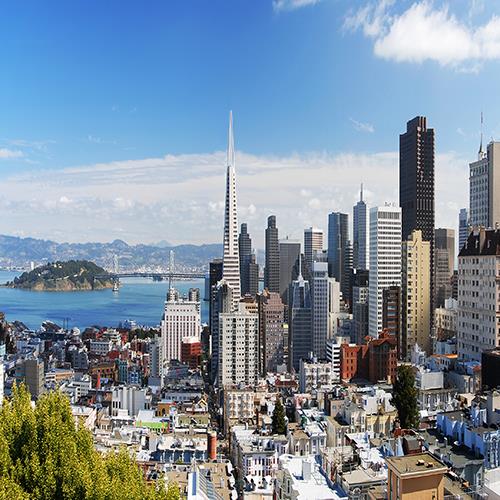
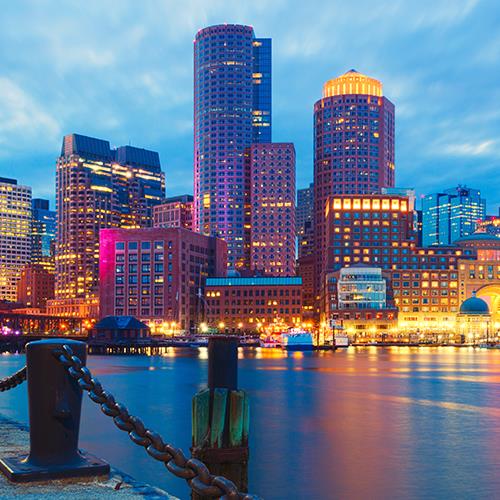





We would be remiss if we didn’t mention all the other great shopping streets and districts in other parts of the world. Let’s start a little closer to home. Of course Los Angeles is famous for The Grove and nearby Beverly Hills and Rodeo Drive (pictured) are iconic fashion districts. Chicago‘s luxury shopping is clustered along the “Magnificent Mile” (North Michigan Avenue), where nearly 500 retailers are located. If you’re looking for a similar number of retailers all under one roof, your best bets would be to take a vacation to the Mall of America in Bloomington, Minnesota or to the West Edmonton Mall in Alberta‘s capital. Yonge Street is the epicenter of retail in Toronto, and is home to one of Canada’s most popular shopping malls, Eaton Centre. In Latin America, the top shopping streets for designer brands include Avenida Presidente Masaryk in Mexico City and Rua Oscar Freire in the exclusive Jardins neighborhood of São Paulo.
What other shopping cities and districts are there to see in North Africa and Europe? The medinas of Marrakech (pictured) top our list of best souvenirs in the world. Casablanca is a place where Europe and the Arab world mesh, and you can see that from the souvenir shops near Place des Nations Unies to the more luxurious boutiques and shopping centers on La Corniche. Madrid‘s fashion and retail epicenter is the Calle Gran Vía, which stretches from the Plaza de España to the Calle Alcalá. You can find hundreds of stores here, including the ZARA flagship store. Head to Calle Serrano for smaller boutiques. Na Příkopě, near Wenceslas Square, is a shopper’s dream so remember that the next time you plan a Tripmasters vacation to Prague. Vienna, four hours from Prague by train, is known for streets such as Mariahilfer Straße, Graben, Kohlmarkt, and finally Tuchlauben, where the famed luxury shopping district Goldenes Quartier is located. One last shopping district we recommend for all price points is the breathtakingly beautiful İstiklal Caddesi in the Beyoğlu district of Istanbul.


The shopping districts of Asia and Oceania offer some of the most beautiful gifts you can ever pick up on an international trip. Dubai is known for its malls, such as The Dubai Mall and Mall of the Emirates, but also for its charming souks like Deira Gold and Bur Dubai, where souvenir shopping and haggling are king. Bangkok has so many enchanting shopping options, from luxury brands near Siam Square to souvenir shops on Khao San Road and even the floating markets (pictured) sell unique souvenirs in addition to foodstuffs. If you’re visiting Singapore, you could spend your entire trip strolling along Orchard Road, the retail epicenter of the small city-state. Clarke Quay and nearby Hill Street are also not to be missed. Hong Kong has been known for its shopping since the British ruled the city, and its main shopping areas are Argyle Street and Nathan Road to the north of Victoria Harbour, and Causeway Bay on the southern end. (Remember, Hong Kong is also renowned for its duty-free shopping!) If you’re going Down Under, stop in Sydney first and stroll the streets to the east of Darling Harbour and to the west of Hyde Park, and in Melbourne, you will love all the shops and stores south of Lonsdale Street and north of Flinders Street.
Finally, let’s talk about duty-free shopping. Many travelers love shopping duty-free because they avoid many local taxes and they can acquire goods that might not be readily available at home. It’s also a great place to pick up souvenirs that have the essence of the place you’re visiting. For example, the best place for souvenirs in Iceland is Duty Free Iceland at Keflavik Airport, which offers goods at deeply discounted prices compared to elsewhere in Iceland. For those who love high fashion, the Incheon International Airport near Seoul opened the world’s first duty-free Louis Vuitton store, and boasts nearly 90 other designer boutiques. American territories such as Guam and the U.S. Virgin Islands offer many concessions to travelers wanting to shop duty-free, such as a higher declarable amount ($1,600). The Bahamas, Barbados, and Jamaica don’t allow such a high amount of purchases (only $800) but their shopping options are wonderful. Then of course there are duty-free shops outside international airports, which you can find everywhere from Guatemala City (pictured) to Johannesburg to Kuala Lumpur.





A lot of research goes into finding destinations that are tailored to your needs and letting you know what you can see and do when you get there. Head over to Tripmasters.com and you can look at our custom-built itineraries for thousands of exciting vacation destinations in over 120 countries and territories throughout the world.
